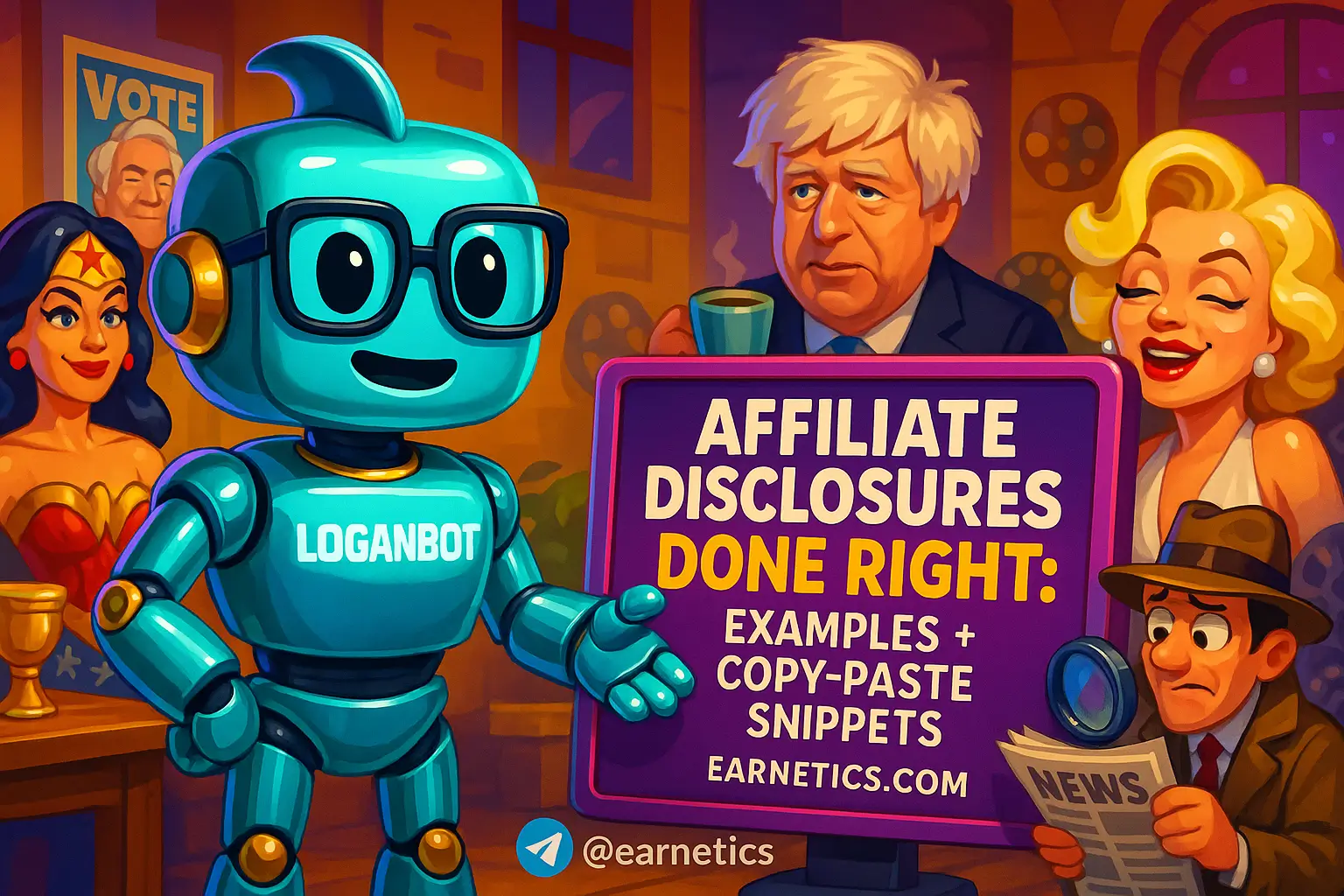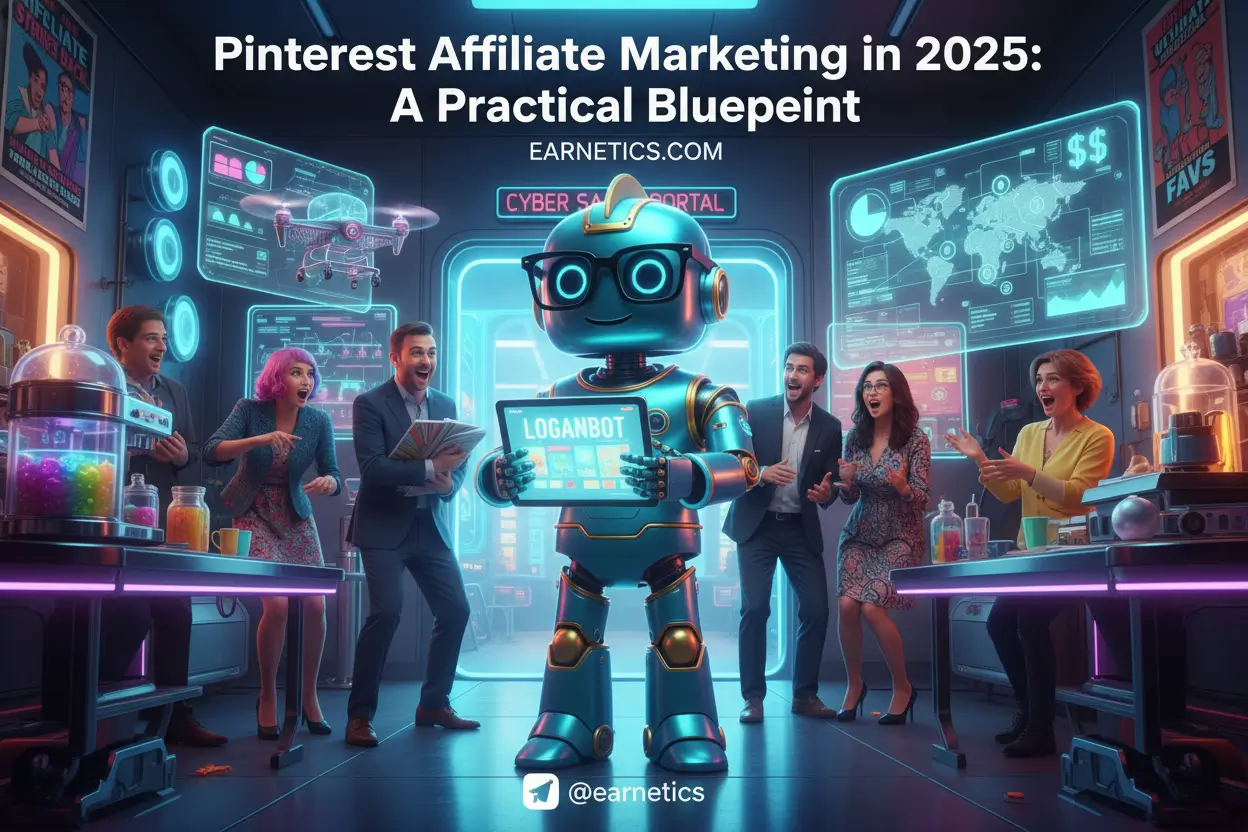Most people screw up affiliate disclosures – here’s how to do them right with real examples
Affiliate disclosures are your legal lifeline and trust badge online – get exact wording, real examples, copy-paste snippets, and placement rules to avoid fines and lost readers.
I say that because I learned the hard way – one tiny buried note and a panicked DM from a reader later, I realized affiliate disclosures were not optional fluff. They are short statements that tell your audience you may earn money when they click links or buy through your content. Bloggers, influencers, podcasters, email marketers, and creators all need them. Get it wrong and you risk FTC trouble, damaged credibility, and search engines sniffing out a trust problem.
In this article I give you the rules, plain-language examples, and copy-paste snippets so you can stop guessing and start shipping transparent content. I’ll also show placement tricks that keep your disclosures obvious without ruining conversion rates. Expect clear rules, platform-specific affiliate disclosure examples, ready-made affiliate disclosure templates, and UX tips for where to put affiliate disclosure so it actually gets seen.
Quick keyword snapshot I used while researching this guide: main keyword – affiliate disclosures; high-traffic secondary keywords – FTC affiliate disclosure, affiliate disclosure examples, affiliate disclosure templates, where to place affiliate disclosure, affiliate disclosure for bloggers, influencer affiliate disclosure; LSI terms – material connection, disclosure statement, affiliate links, sponsored, paid partnership, commission, transparency, affiliate disclaimer, endorsement guide.
Roadmap – I’ll cover: FTC rules & legal basics, ready-made examples by platform, copy-paste templates & snippets, placement and visibility best practices, and a conclusion with a tight checklist you can implement today. Stick with me – I’ll even give you the exact lines I use on my own sites so you can copy-paste and move on with your life.
FTC rules & legal basics
I’ll keep this painfully practical. The FTC affiliate disclosure rules are simple in principle: if there is a material connection between you and a brand – that includes free products, money, discounts, or other perks – you must disclose it in a clear and conspicuous way. The emphasis is on clear and conspicuous. No legalese, no tiny text, and no burying the note where nobody scrolls.
What the FTC requires:
1. Material connection: If you might earn a commission, you have a material connection and you must disclose it.
2. Clear and conspicuous language: Use plain words like I may earn a commission or Sponsored – don’t hide behind vague terms.
3. Platform-agnostic rules: Disclosures must be effective on the platform you use – what works on a blog might not work on TikTok.
Example of acceptable language: I may earn a commission if you buy through links on this page. Example of ambiguous language: Some links on this page help support the site – that’s not good enough. The FTC has guidelines and examples that show you how explicit you need to be – see the official guidance for more details at FTC Endorsement Guides.
Common compliance mistakes I still see: burying the disclosure in the footer, making it tiny or low-contrast, relying on a hashtag like #ad alone, or listing it only in an About page. Fixes are simple – put a short disclosure near the call to action, say it aloud in video or podcasts, and use clear verbs like earn, paid, or sponsored. If you want to be extra-safe, repeat the disclosure where the link appears.
Ready-made examples by platform
Nothing beats real-world examples. Below I share the exact phrasing I use or recommend, and why each version works for its platform. These are practical, short, and FTC-friendly affiliate disclosure examples.
Blog & long-form content examples
Inline short disclosure (works for single affiliate links): I use this when a post mentions one or two products. Place it directly before the first link.
Example: I may earn a small commission if you buy through links on this page at no extra cost to you.
Beginning-of-post disclosure (best for long reviews): Put this above the fold, right after the headline or lead paragraph so readers see it immediately.
Example: This post contains affiliate links. If you purchase via these links, I may earn a commission – I only recommend products I use and trust.
End-of-post expansion (good for full transparency): A longer block that explains the relationship and why you recommended the product.
Example: I receive commissions from some partners. That helps me test more products and keep this blog running. My recommendations reflect my honest experience and testing.
Social media & video (YouTube/Instagram/TikTok) examples
Short on-screen captions for video: Keep it visible for the duration of the relevant clip and pair with a pinned comment or description line.
Example on-screen: Paid partnership – I may earn a commission. Pinned comment/description: I may earn a commission if you buy via links in this description.
Instagram and TikTok captions have character limits and hashtag confusion, so say it aloud and add a clear tag like #ad plus a short phrase in the caption or first comment.
Verbal script for a 30-second video intro: Quick line I use – Heads up – this video includes affiliate links. If you buy something I may earn a small commission at no extra cost to you.
Email, newsletters, and podcasts examples
Subject line / header snippet for email: I keep it short and obvious.
Example header: Includes affiliate links – simple and effective.
Body sentence: Place this at top or near the first mention of a product.
Example: Some links in this email are affiliate links. If you buy, I may earn a commission at no extra cost to you.
Spoken podcast script: I record a concise disclosure near the top and mention again before any specific product endorsement.
Example intro read: Quick note – this episode contains affiliate links. If you purchase through links mentioned, I may receive a commission. Thanks for supporting the show.
Copy-paste templates & snippets
I love templates because they save brain power. Below are short, ready-to-use affiliate disclosure templates and longer options for reviews or resource pages. Copy-paste and tweak the tone if you want to sound less formal or more playful.
Short one-line snippets (copy-paste)
Here are 7 one-liners I actually use and test across my sites. Pick one that matches your voice – formal, friendly, or influencer-casual.
1. I may earn a small commission if you buy through links on this page.
2. This post contains affiliate links – I earn money when you purchase through them at no extra cost to you.
3. Paid partnership disclosure: I receive compensation for links in this post.
4. Quick note – some links below are affiliate links. If you buy, I may earn a commission.
5. I get commissions for purchases made through links in this article – thanks for supporting my work.
6. This content includes affiliate links. I only recommend products I use and would suggest to friends.
7. Sponsored content: I may be paid if you buy through these links.
Longer disclosure templates
Two paragraph template for reviews or resource pages – use this when you want to be extra transparent and helpful.
Example long template: I want to be transparent – some links on this page are affiliate links, which means I may earn a commission if you buy through them. This does not change the price you pay. I only partner with products I have used or researched. My top picks come from hands-on testing and comparisons, and I try to highlight real pros and cons so you can decide if a product fits your needs.
Another version for sponsored posts: This post was sponsored by [Brand Name]. I received compensation to write this review, but all opinions are mine. I aim to provide honest feedback and only accept sponsorships that align with my standards and audience interests.
How to customize templates
Quick rules when you tweak a template: keep the key words – earn, commission, sponsored, paid – so the message stays explicit. Add partner names if required. Match tone to your brand – formal blogs can use I may earn a commission, while creators can say I might get paid if you buy. Never replace the disclosure with only a hashtag. If you shorten the language for visuals, repeat the line in captions or descriptions so it is persistent.
Placement, visibility & UX best practices
Placement matters more than you think. You can have the perfect wording but still be non-compliant if the disclosure is invisible or confusing. Here’s what I do and recommend.
Best placement for blog posts and product reviews
Above-the-fold is your safest bet. Put a short disclosure right after the headline or the first paragraph so it’s the first thing a reader sees. If you use multiple affiliate links, repeat the disclosure near the call to action or the first link. For comparison tables, add a disclosure at the top of the table and a note repeated near each purchase button.
Disclosures for links, buttons, images, and widgets
When you have affiliate buttons or product images, label the button or add a small, readable overlay that says Affiliate or Sponsored. For accessibility, include the disclosure in alt text or an aria-label so screen readers announce it. If a widget lists products, add a sticky or visible header that states the material connection.
Mobile, accessibility, and readability considerations
Small screens make buried disclosures invisible. Use adequate font size and contrast, avoid tiny gray text, and keep language short. For video and audio, make the verbal disclosure early and clear. For accessibility, include text equivalents that screen readers can parse. Test on actual phones – I always check my phone and an older device to make sure the disclosure doesn’t disappear below the fold.
Conclusion
Summary – Affiliate disclosures are the small, obvious statements that keep your content honest, legal, and trusted. The FTC expects clarity and conspicuousness, and search engines reward transparency with better user trust signals. I gave you practical FTC basics, affiliate disclosure examples across platforms, useful affiliate disclosure templates, and concrete tips on where to place affiliate disclosure so it gets seen and understood.
Quick checklist – actionable items you can knock out in the next 15 minutes:
1. Pick one short template from the snippets above and paste it above the fold on your next post.
2. Add a one-line disclosure near any affiliate button or image.
3. Say the disclosure aloud in every video and podcast episode before promoting a product.
4. Avoid relying only on hashtags – use plain language in captions or descriptions.
5. Test your pages on mobile and with a screen reader to confirm visibility.
6. Repeat the disclosure where a purchase action happens – near the link or CTA.
7. Keep a longer explanation on review pages or resource pages for full transparency.
If you want a lazy-win, copy one of the one-liners above and paste it where your links live. It’s not glamorous, but it avoids headaches and builds trust. Save this article as your reference and tweak the tone to fit your voice – that’s what I do across different projects. Want to level up your process? I automated disclosure placement across my older posts using a simple content filter – it saved me hours and fixed a bunch of missed disclosures in one go.
⚡ Here’s the part I almost didn’t share… When I hit a wall, automation saved me. My hidden weapon is Make.com – and you get an exclusive 1-month Pro (10,000 ops) free to automate repetitive disclosure updates and link labels.
✨ Want the real secret? If this clicked for you, my free eBook Launch Legends: 10 Epic Side Hustles to Kickstart Your Cash Flow with Zero Bucks goes even deeper on systems, automation, and affiliate revenue playbooks.
Build your digital income empire today on Earnetics.com – bookmark this guide, copy a template, and make transparency your competitive advantage.


